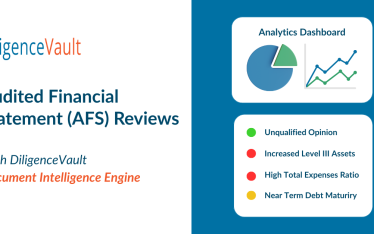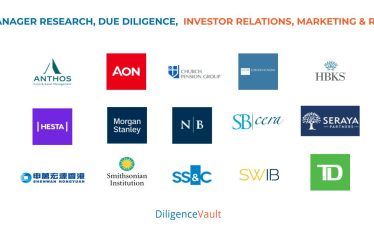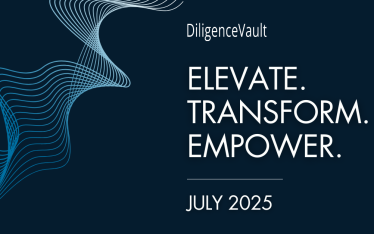Technology and human ingenuity have made wonderful things possible in our personal lives. Whether it is connecting with friends and associates, or finding products and services, there is much more at our fingertips than ever before. The connections and transactions that we engage in are easy and seamless – provided that we have the basic digital tools. The lack of friction and low cost is enabled by well-designed technology platforms that provide mutual benefits for all on the platform.
For those who work in marketing or asset allocation functions in the asset management industry, the technology available on the desktop in the workplace for investment, operational and transactional due diligence is notably inferior to that used for personal business on their laptops or cellphones. The basic tools at work are still the quarter-century old general application technologies of documents and emails, perhaps supplemented by unidirectional VDRs, ‘clunky’ in-house proprietary tech, or older generation, locally hosted applications provided by third party vendors. For users of these robust but blunt instruments, the sense of antiquated technology and needlessly cumbersome processes is palpable compared to other areas of life.
The Sharing Economy
The touchy-feely name obscures the fact that the sharing economy is enabled and driven by seriously sophisticated, mutualized technology platforms that eliminate much of the friction in transactions and provide top-notch user experience. Arun Sundarasan’s 2016 book, “The Sharing Economy” outlines 5 salient criteria that characterize entities in the sharing economy. They involve: 1) market-based systems; 2) high-impact capital, allowing for greater utilization of existing assets; 3) capital and labor supplied by crowd-based ‘networks’ as opposed to centralized institutions or ‘hierarchies’; 4) activity that blurs the lines between the ‘personal’ and the ‘professional’; and 5) activity that blurs the lines between fully employed and casual labor.
In layman’s terms, the sharing economy could be simplified as “Excess capacity or supply in my asset is yours, temporarily, for a rent/price.” By leveraging technology, the sharing economy has generated new supply to meet existing demand. Think of the benefits that Uber has brought to both passengers and drivers, or that AirBNB has brought to both travelers and homeowners. And the sharing economy has created new demand areas by making things more accessible and easier. Think of TaskRabbit and the benefits it offers to both consumers and providers of services. In aggregate, the leveraging of technology in the sharing economy brings down cost for users of goods and services, and it creates income for more providers of goods and services. Economic activity is elevated via technology-driven productivity improvements – for both buyers and sellers.
What is notable from Sundarasan’s definition is that the sharing economy is squarely in the retail or consumer space, involving C2C or B2C transactions. The sharing economy is not B2B. It seems ironic that all this innovation and ease of use in the retail/consumer world has not penetrated the sophisticated world of institutional asset management.
In general, the corporate world is not known for a culture of ‘sharing’. However, if the asset management industry were to adopt some of the innovation from the sharing economy, particularly a shared digital infrastructure, there would be great economic and productivity benefits for both colleagues and clients alike. Here are some thoughts about how the innovations of ‘sharing’ digital infrastructure can be relevant in the B2B area of asset management.
Improve Asset Utility
Viewed broadly, information is an asset – including that which fund advisers file with the SEC in Forms ADV, 13F, or D, as well as that within fund marketing materials. Because this information is publicly available, technically everyone benefits from it. But the reality is that institutional consumers of this information need a digital infrastructure to be able to make use of it, given the sheer volume of data involved. A centralized digital infrastructure provided by a neutral industry platform at a low cost would essentially function as a public utility. It would leverage the information available to lower the cost and improve the quality of decision making in the industry. Lower costs and better returns would allow investors to keep more of their hard-earned dollars.
Enhance Transparency, Communication, and Information Dissemination
In theory, regulatory filings are a way for advisers to provide transparency and communicate with investors, regulators and the market, since the filings are all publicly available and contain a lot of information. However, in aggregate, the filings contain millions of data points in such an amorphous format, that salient information is effectively obscured rather than illuminated. Technology that digitizes the information into data points and screens for materiality thresholds would allow the filings to achieve the goals of transparency and information dissemination.
Market-Based
Enhanced access to data would support improved decision making. It would also allow those who operate more efficiently at lower cost, or make better decisions resulting in superior performance, to be rewarded with more business. At present, the cumbersome nature of processing information, as well as the sheer volume of it, result in benefits only to those firms that have the scale to process it all in some fashion, either manually with a large staff, or with proprietary technology systems, or both. Without good technology, there can be no assurance of quality at scale. Whether for allocators or fund marketing, technology in the institutional asset management industry tends to be one-sided (benefitting only those who built or bought it) rather than mutualized, so there is still wasted effort and higher cost for the other side. And advisers are wasting time and effort with manual responses to requests for mostly the same information in each allocator’s slightly different questionnaire.
A mutualized technology platform that reduces frictions in the information exchange for both allocators and advisers lowers cost, thereby enhancing investment outcomes. Leveraging technology also allows for more meritocracy in investment outcomes, where those entities with superior talent, process and efficiencies are rewarded with more business. As the industry and its technology evolve, it can achieve better investment results for investors with lower risk by leveraging technology such as automation, machine learning, and NLP to further drive down cost.
Networks as Opposed to Hierarchies
A shared platform allows all players, large and small, access to better information. Since the financial crisis, it seems that the large asset allocators have gotten larger as the increasing complexity of the industry rewards scale. However, good technology with screening capabilities, analytics, and automation of rote tasks provides smaller entities with access and the ability to scale. The competitive advantage of size is reduced when players leverage technology. Instead, a shared research platform could help create networks of institutions and individuals who work to further innovate the industry in areas such as research, analytics, process, best practices and standards.
Competition vs. Collaboration
Competition is ingrained in American business culture, given our strong capitalist ethos. Private sector investments in technology, whether databases or software, are viewed as proprietary assets. However, the utility they provide is generally limited to those who create them, with little or no benefit to the rest of the network.
In many industries, basic infrastructure such as roads, telecommunications, or the internet is necessary for business to function. The size and complexity of the asset management industry make it one that needs a mutualized digital infrastructure. Such a platform would allow allocators to make decisions from a data-driven perspective, and would allow advisers to be efficient in their communications to the market, the regulators, and their investors.
If there is one thing that concerns Everyone, Always, it is: CO$T! And what does good infrastructure do? It provides access and it reduces costs. In the asset management industry, a somewhat collaborative approach with a shared digital infrastructure (think Linked In and Facebook, as well as Microsoft Outlook), would lower costs across the board.
If analysts and portfolio managers could focus on value-added process and analysis, while mundane tasks were all automated – tasks like screening, information copy-paste, and storing files on shared drives – that would take unnecessary cost out of the process. (Improved job satisfaction would be an added plus). The cost of compliance oversight, which has grown so much in recent years, would be reduced with the recombinant technologies of automation, workflow approvals, time-stamped audit trail, document storage and data repository. And if fund marketing teams could focus on finding and serving clients, while the process of filling out questionnaires and RFIs became largely automated, there would be tremendous cost savings that could accrue to investors, retirees, and other beneficiaries. Taking a wide-angle view, it seems that the more competitive solution for the industry overall involves sharing a mutualized infrastructure.
Potential Hurdles
What stands in the way of shared digital infrastructure? One issue is control factors around data security, data ownership, and technology. It is understandable that firms want and need to control these things. However, counterparty risk and vendor risk have long been part and parcel of the asset management industry. Allocators, advisors and consultants should be up to the challenge of demanding and diligencing the relevant policies, practices, and capabilities of their business partners.
Another issue is the struggle for competitive advantage. For the very large allocators, consultants and funds, their scale can afford them the ability to become centers of excellence with asymmetric access to information and technology, all of which results in competitive advantage. These players will need to be convinced that either 1) their leading position will remain intact as the whole industry moves up the technology curve, or 2) their leading position cannot be retained unless their technology remains at the forefront.
The Solution
For those who would be interested to see innovations from the sharing economy applied to investment, operational and transactional due diligence, check out DiligenceVault!



